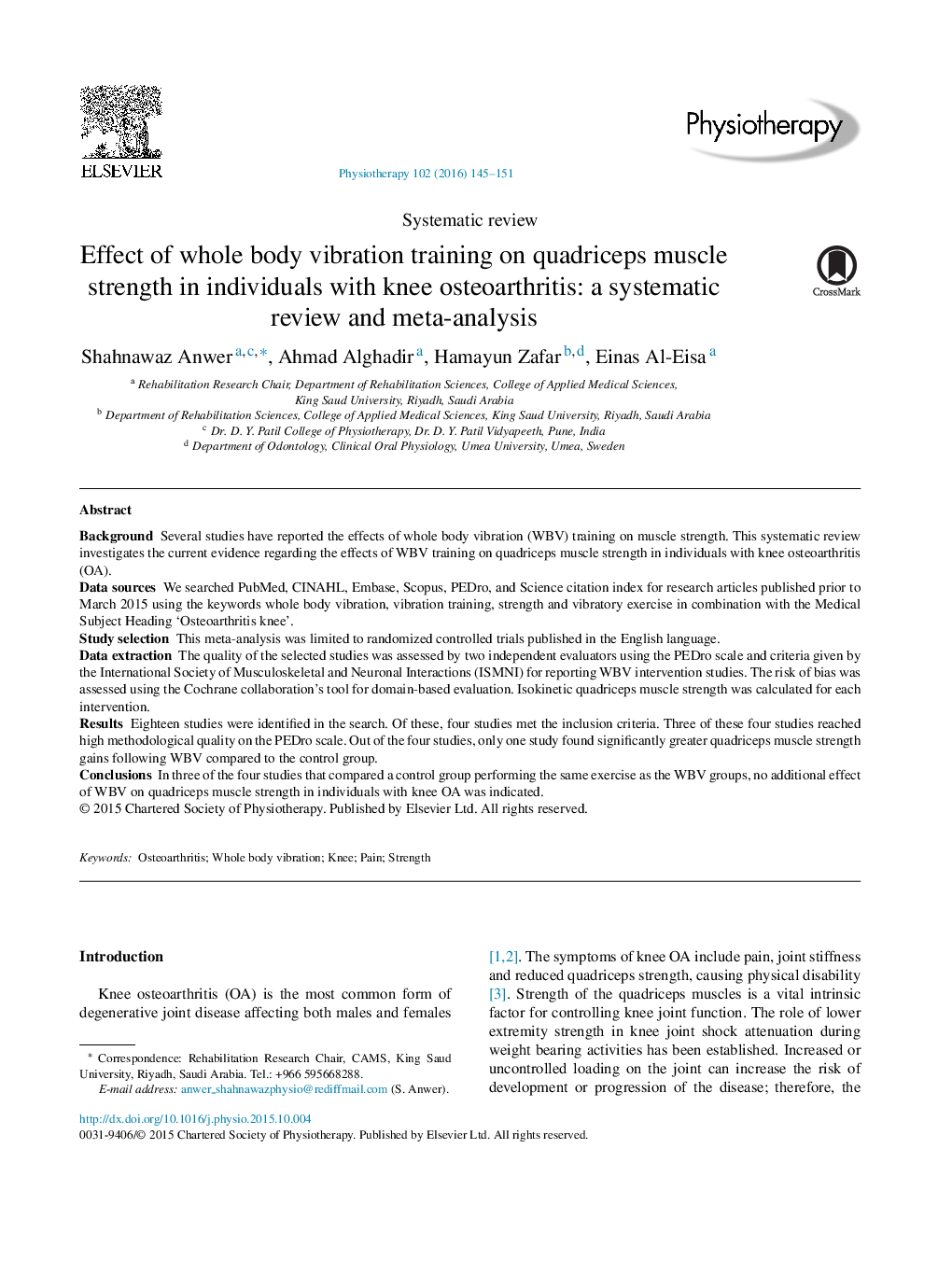| Article ID | Journal | Published Year | Pages | File Type |
|---|---|---|---|---|
| 5865068 | Physiotherapy | 2016 | 7 Pages |
BackgroundSeveral studies have reported the effects of whole body vibration (WBV) training on muscle strength. This systematic review investigates the current evidence regarding the effects of WBV training on quadriceps muscle strength in individuals with knee osteoarthritis (OA).Data sourcesWe searched PubMed, CINAHL, Embase, Scopus, PEDro, and Science citation index for research articles published prior to March 2015 using the keywords whole body vibration, vibration training, strength and vibratory exercise in combination with the Medical Subject Heading 'Osteoarthritis knee'.Study selectionThis meta-analysis was limited to randomized controlled trials published in the English language.Data extractionThe quality of the selected studies was assessed by two independent evaluators using the PEDro scale and criteria given by the International Society of Musculoskeletal and Neuronal Interactions (ISMNI) for reporting WBV intervention studies. The risk of bias was assessed using the Cochrane collaboration's tool for domain-based evaluation. Isokinetic quadriceps muscle strength was calculated for each intervention.ResultsEighteen studies were identified in the search. Of these, four studies met the inclusion criteria. Three of these four studies reached high methodological quality on the PEDro scale. Out of the four studies, only one study found significantly greater quadriceps muscle strength gains following WBV compared to the control group.ConclusionsIn three of the four studies that compared a control group performing the same exercise as the WBV groups, no additional effect of WBV on quadriceps muscle strength in individuals with knee OA was indicated.
